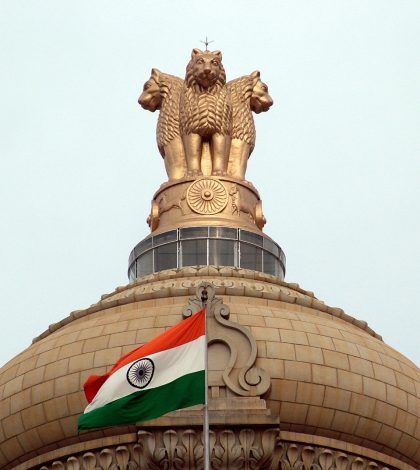Daily Current Affairs - 16th May 2025
Does Article 21 include right to digital access?
Detailed Insights: Supreme Court’s Ruling on Digital KYC Accessibility for Persons with Disabilities (PwDs)
Constitutional and Legal Context
- Constitutional Mandate: The Supreme Court has reinterpreted Article 21 (Right to Life and Liberty) to include the right to digital access, recognizing that access to essential services is now largely mediated through digital platforms. This right is intrinsically linked to dignity, autonomy, and equal participation in public life. The Court also invoked Articles 14 (Equality), 15 (Non-discrimination), and 38 (Social Welfare) to underline the state’s obligation to ensure digital inclusion for all, especially the marginalized.
- Statutory Safeguards: The Rights of Persons with Disabilities (RPwD) Act, 2016, aligns Indian law with the UN Convention on the Rights of Persons with Disabilities (UNCRPD). It mandates universal design, reasonable accommodation, and accessible information and communication technology (ICT) in all public and private services.
Judicial Findings and Rationale
- Recognition of Digital Divide: The Court acknowledged that digital KYC processes-though efficient-systematically exclude PwDs, particularly those with visual impairments or facial disfigurement, as well as rural populations, the elderly, and linguistic minorities. The digital divide thus perpetuates social and economic exclusion.
- Barriers in Existing KYC Norms:
- Current digital KYC methods (e.g., facial recognition, blinking, selfies, quick OTPs) are inaccessible to many PwDs.
- Landmark Directives Issued by the Supreme CourtLack of screen-reader compatibility, audio cues, and acceptance of alternative authentication (like thumb impressions) further marginalizes these groups.
- Inclusive KYC Verification:
- RBI must issue new guidelines allowing alternative “liveness” checks beyond blinking or facial movements.
- Thumb impressions must be accepted for visually impaired users.
- Periodic accessibility audits by certified professionals are mandatory for all regulated entities.
- Universal Design and Accessibility:
- All government and private digital platforms must comply with accessibility standards (WCAG 2.1, GIGW).
- Involvement of PwDs in user acceptance testing for new digital services.
- Mandatory appointment of nodal officers for digital accessibility compliance in every department.
- Support and Grievance Redressal:
- Establishment of dedicated helplines and human review mechanisms for rejected KYC applications due to accessibility issues.
- Information must be provided in multiple accessible formats (Braille, audio, easy-to-read).
- Sensitization and Monitoring:
- Disability awareness and inclusion training for employees of regulated entities.
- RBI to monitor implementation and conduct public awareness campaigns.
Broader Implications
- From Policy to Constitutional Imperative: The judgment transforms digital accessibility from a policy preference to a constitutional right, making it legally enforceable and non-negotiable for both public and private entities.
- Accountability and Implementation Gaps: Despite progressive laws like the RPwD Act, implementation has lagged due to lack of state-level oversight, insufficient appointment of commissioners, and absence of robust monitoring mechanisms. The Court’s directions aim to bridge this gap by mandating compliance and periodic audits.
- Societal Impact: The ruling is expected to catalyze inclusive digital transformation across sectors-banking, education, healthcare, and governance-ensuring that PwDs are not left behind in India’s digital revolution. It also sets a precedent for addressing the needs of other marginalized groups affected by the digital divide.
Conclusion
The Supreme Court’s intervention marks a paradigm shift in India’s approach to digital governance and disability rights. By embedding digital accessibility within the core of constitutional rights, the judgment mandates that digital inclusion is not just a legal requirement but a societal obligation. Effective implementation, continuous monitoring, and active involvement of PwDs are now essential to realize the promise of equality and dignity for all citizens.
Should NOTA be compulsorily Included in all elections?
Context: Recently, the Vidhi Centre for Legal Policy filed a Public Interest Litigation (PIL) advocating compulsory inclusion of NOTA (‘None of the Above’) in all elections, even if only one candidate contests.
Historical Background:
- NOTA was introduced in India following a 2013 Supreme Court directive responding to a PIL by the People’s Union for Civil Liberties, emphasizing the right to secrecy for voters choosing not to vote for any candidate.
- The intent was to empower voters to express dissent against the available candidates, maintaining their anonymity and democratic choice.
- The first use of the NOTA option in Indian elections occurred during the 2013 legislative assembly elections. It was implemented in the following states and union territory:
- Mizoram
- Madhya Pradesh
- Chhattisgarh
- Rajasthan
- Delhi (Union Territory)
Significance of NOTA:
- NOTA is designed to reflect voter dissatisfaction towards candidates, promoting accountability and responsiveness in the electoral system.
- Despite low adoption rates, it symbolically represents voter discontent and the quality of political choices available.
- NOTA gains particular relevance in constituencies with only one candidate, offering voters a democratic mechanism to express opposition rather than passively accepting an unopposed candidate.
Election Commission’s Argument:
- The Election Commission (EC) opposes compulsory inclusion of NOTA in uncontested elections, citing minimal historical precedence for uncontested elections.
- According to EC data, only six Lok Sabha elections have been uncontested since 1971, and only nine candidates were elected unopposed since 1952, making uncontested elections statistically negligible.
- EC argues mandating NOTA would require legislative amendments to the Representation of the People Act, 1951, and the Conduct of Election Rules, 1961.
Analysis of NOTA Usage:
- Although NOTA votes constitute roughly 1% in Lok Sabha elections (2014, 2019, 2024), given the vast voter base (approximately 25 lakh voters per constituency), the absolute number of NOTA voters remains significant.
- Some state assembly elections reported higher NOTA usage, notably Bihar (2.48% in 2015) and Gujarat (1.8% in 2017), suggesting regional variations and voter attitudes toward political choices.
- Generally, NOTA usage peaks during the initial introduction in a state but often declines subsequently, indicating voter experimentation or protest diminishing over time.
Challenges and Criticism:
- Critics argue that NOTA has not significantly altered electoral outcomes or political accountability.
- The EC highlights practical challenges, including administrative burdens and resource allocations, although these are manageable given EC’s proven capacity to manage large-scale elections.
Potential Reforms and Recommendations:
- Establishing a minimum vote percentage benchmark for candidate legitimacy could ensure candidates represent a broader voter consensus.
- Introducing mandatory re-elections if NOTA votes exceed a certain threshold can legitimize NOTA’s utility and enhance electoral responsiveness.
- Legislative clarity and electoral reform are essential to define NOTA’s legal status clearly, possibly making amendments to election laws to integrate NOTA effectively.
Conclusion:
Compulsory inclusion of NOTA in all elections has symbolic and practical significance for enhancing democratic expression. While challenges exist, structured electoral reforms to empower NOTA voters could strengthen India’s democratic fabric and increase political accountability.


